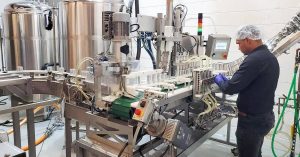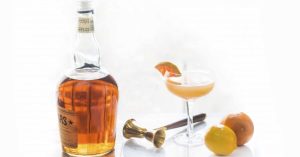Did you know that the average adult has around 2,000 to 4,000 taste buds? Our taste buds include sensory cells responsible for what things taste like to each person. The flavor of whatever we’re drinking or consuming varies depending upon the ingredients needed to produce the desired product.
Commercial drink and food products include a wide range of ingredients. Recently, the topic of “natural flavors vs. artificial flavors” has increased in popularity. Artificial and natural flavors are essential components in beverage creation.
Many of the discussions surrounding natural and artificial flavors are about whether or not natural flavors are better for you. Another common topic is the origin of natural flavors.
A beverage’s flavor additives are essential to the drink’s sensory profile. It’s important to know the differences between the types of additives. This guide will discuss everything you need about artificial and natural flavors.
What’s Flavor?
Flavor refers to the sensory impression that a beverage gives a person. It’s determined by the chemical senses of smell and taste. One flavor can contain 50-100 compounds from artificial and/or natural sources.
A person’s “trigeminal senses” can also detect chemical irritants in their throat and mouth. They might also determine what a drink’s flavor is. The taste of drinks can get changed with artificial and natural flavor additives.
Flavor additives enhance or alter the flavor of a food or beverage. They can also create a flavor for a product that doesn’t have the desired flavor. Flavors can also make bland but healthy options more appetizing.
Discover the Magic of Natural Beverage Flavors: Exploring the Essence of Nature in Your Drinks
Discover the world of natural flavors in beverages. Natural flavors are derived from plant or animal-based sources, including:
- roots
- herbs
- dairy
- meat
- fruits
- bark
- and spices.
Many people associate natural flavors with sustainability and perceive products containing them to be healthier choices. When a beverage incorporates natural flavors, it signifies that the flavors were sourced from nature. Natural flavors primarily serve the purpose of enhancing the taste of the beverage rather than making it more nutritious. Explore the delightful infusion of natural essence in your favorite drinks.
The function of a natural flavor is to flavor a beverage. It’s not designed to make a product more nutritious.
What Are Beverage Artificial Flavors?
Artificial flavors are flavors that aren’t sourced from natural places. People assume that if something has artificial flavoring, it’s not as healthy for you as products with natural flavoring.
In regards to flavor science, that’s not necessarily the case. Artificial and natural flavors aren’t that different. Sometimes, a natural flavor can also include synthetic chemicals.
Artificial flavors get created in a controlled laboratory. They undergo thorough quality control throughout the formulation process. You can find many artificial flavors with higher purity than natural ones.
Flavor chemists prepare flavor mixtures that follow strict efficiency and safety guidelines. They also create profiles to meet the preferences of consumers. Flavor and beverage formulation companies must comply with USDA and FDA rules for food production.
For example, if you eat vanilla ice cream, you’re likely eating artificial flavors. There aren’t enough vanilla beans that can keep up with the demand needed for the flavor. Vanillin is the compound that gives vanilla its signature flavor.
The chemical compound of artificially or naturally sourced vanillin is the same. Artificial flavors are designed to have the same flavor as those found from natural sources. Its chemical structure mimics the natural compound, giving beverage manufacturing companies a cost-effective solution to flavor their drinks.
What Kinds of Drink Artificial Flavors Are There?
Countless artificial flavors are designed to mimic natural flavors. Remember that creating an artificial flavor that hasn’t been tasted before is rare.
You can find a complete list of FDA-approved artificial flavors on their website. Some common artificial fruit flavors and other types of flavors include:
- Vanilla
- Herbs
- Butter
- Buffalo
- Grape
- Banana
- Cherry
- Orange
How Do Flavorists Identify and Replicate Flavors from Natural Sources?
Flavorists play a crucial role in the food and beverage industry by dissecting and reproducing the complex taste profiles of natural ingredients. Their work begins with an intricate understanding of the molecular composition of flavors. Here’s how they do it:
-
Trend Identification: Flavorists stay on top of current taste trends, which may involve scouting trips to discover emerging popular flavors. This knowledge helps them anticipate consumer preferences and innovate accordingly.
-
Flavor Analysis: To replicate a flavor, such as passionfruit, the team needs to comprehend its molecular signature. Given the impracticality of using actual passionfruit in large quantities, flavorists source the fruits for tasting and analysis. Using a sophisticated vocabulary similar to a “wine wheel,” they break down the flavors into identifiable components.
-
Molecular Fingerprinting: In collaboration with research laboratories, flavorists decode the molecular structure of the target flavor. They identify which compounds replicate the original taste most closely, using available substances within the lab.
-
Natural Compounds Sourcing: Sometimes, surprising natural materials are used to mimic flavors. For instance, compounds from African violets or Benzoin Siam bark can augment certain flavors. Passionfruit’s sulfur-containing volatiles might be mimicked using similar volatiles from grapefruit.
-
Flavor System Creation: After isolating the necessary compounds, the flavor is crafted by blending these with other complementary notes, such as pineapple or orange. These mixtures are developed in the lab but may still qualify as “natural” when labeled.
-
Production: Once the desired flavor system is established, it is scaled up for production. The flavor, diluted with substances like water or glycerin, is manufactured in facilities akin to large kitchens designed for industrial output.
Through this meticulous process, flavorists can replicate the essence of natural flavors, ensuring cost-effectiveness and sustainability while delivering the tastes people love.
What Are Hybrid Beverage Flavors?
Many beverages say on their labels that they include artificial and natural flavors. The natural flavor is used to create the basic flavor profile of a beverage. Artificial flavors enhance and modify the flavor profile.
The artificial and natural flavors work together to support the flavor profile of a beverage.
The experts at MetaBrand are here to help you through the formulating and manufacturing process for your beverages. From creating the right flavor profile to producing your drink, we’ve got you covered. Contact us today to get connected.
Regulations and labeling requirements for Artificial Flavors
products made with artificial flavors vary by country and region. However, here are some general considerations:
Ingredient Declaration: In most jurisdictions, food and beverage products must list all ingredients on the packaging or labeling. Artificial flavors should be clearly identified in the ingredient list.
Naming: The specific term “artificial flavor” or “artificial flavoring” is commonly used to indicate the presence of artificial flavors in a product. It is important to accurately and transparently communicate the use of artificial flavors to consumers.
Disclosure of Source: Some regulations may require additional information about the origin of the artificial flavors. This could involve specifying the type of artificial flavor used or listing the chemical compounds involved.
Food Additive Regulations: Artificial flavors are often classified as food additives and are subject to regulations governing their safety, usage levels, and approval processes. Regulatory bodies such as the U.S. Food and Drug Administration (FDA) or the European Food Safety Authority (EFSA) evaluate and approve artificial flavors for use in specific applications.
Safety Assessments: Prior to their approval, artificial flavors undergo rigorous safety assessments to determine their potential health risks and establish acceptable daily intake levels. These assessments aim to ensure consumer safety.
Allergen Information: If the artificial flavor contains allergenic ingredients or poses a risk of cross-contamination with allergens, appropriate allergen labeling should be provided to alert consumers with allergies or sensitivities.
Frequently Asked Questions
Understanding the differences between artificial and natural flavors can be confusing. Let’s discuss some of the commonly asked questions about flavors.Beverage flavoring is the process of adding flavor, color, and other ingredients to a drink. This can be done with natural or artificial flavorings, extracts, and fragrances. Flavoring can be used to add taste and appeal to drinks, as well as to mask unpleasant flavors or odors. A wide range of flavors are available today, from traditional favorites like lemonade and cola to more innovative options such as lychee-berry or ginger-mint.
Artificial fruit flavors are generally made by combining natural or artificial flavorings with a variety of other ingredients, such as colors and sweeteners. The flavorings can be derived from fruits, as well as from other sources such as herbs, spices, nuts, and essential oils. The blend of ingredients is then combined with water or alcohol to create an extract or concentrate that can be used in food or beverage applications.
Artificial flavors are generally created through the combination of natural and synthetic chemicals. The process begins by isolating the desired flavor chemicals from natural sources, such as fruits, spices, or herbs. These flavor chemicals are then combined with a base material, such as propylene glycol or alcohol, to create an extract or concentrate that can be added to foods and beverages. Additionally, additional ingredients may be blended in to achieve the desired balance of taste, aroma, and color.
So, what’s the best — natural flavors vs. artificial flavors? Chemically speaking, artificial and natural flavors are the same.
Artificial flavors get created in a lab and undergo rigorous testing. Natural flavors get sourced from things found in nature.
There is a lot of hype surrounding the supposed nutritional benefits of beverages with natural flavors. However, there is no nutritional benefit of natural flavors over artificial ones.
A misconception about artificial flavors is that they taste harsh or chemically. Flavor science has progressed a lot in recent years.
A flavor chemist can create any profile that you want. Most people can’t tell the difference.
You can find artificial and natural flavors for alcoholic drinks. Flavors for non-alcoholic drinks can come from natural/artificial sources.
Artificial and natural flavors contain the same molecules. Structurally speaking, they’re the same. Their nutritional value is also the same.
A beverage’s nutrition has nothing to do with its flavor additives. Don’t judge a beverage’s nutritional value based on what type of flavor is used.
Flavor companies don’t have to disclose the ingredients that make up their natural or artificial flavors. The ingredients need to be recognized as being safe by the FDA. As we mentioned earlier, 50 to 100 ingredients can be used in one flavor.
Listing all those ingredients would result in a long list for a beverage label. The FDA requires that a beverage label only say if natural or artificial flavors have been used. Not listing all of the ingredients also protects the flavor’s formula.
A natural flavor is derived from sources found in nature, such as plants, herbs, dairy, meat, fruits, bark, and spices. The term “natural” indicates that the flavoring substance has been isolated from these natural sources. However, it’s important to note that natural flavors can also undergo some processing or extraction methods to extract the desired flavor compounds. These natural flavors are intended to replicate the taste profiles of the natural sources they come from.












